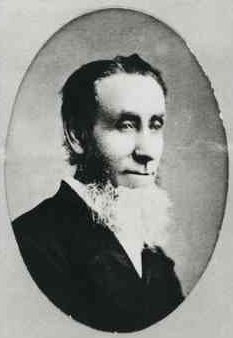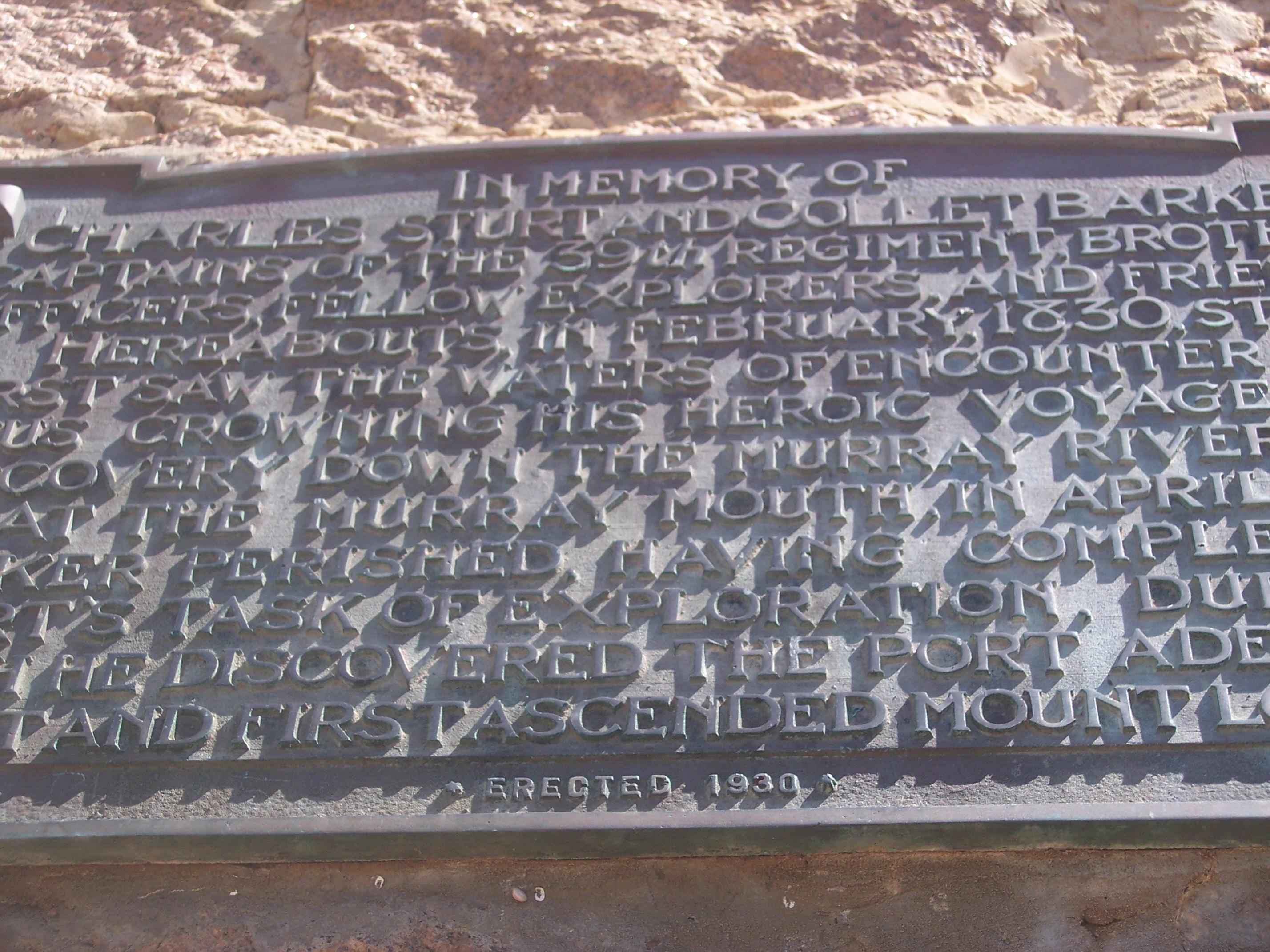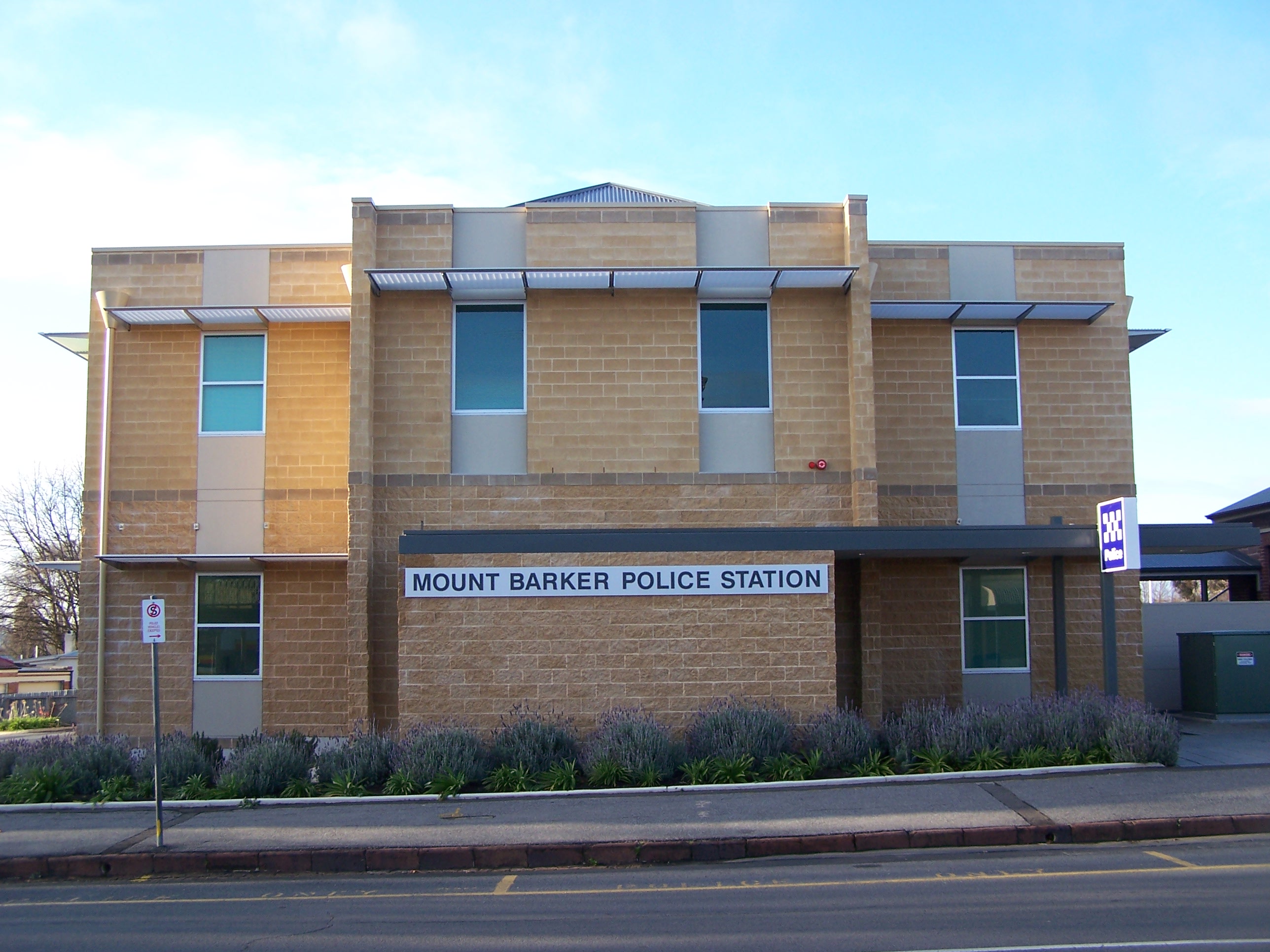|
Mount Barker (South Australia)
Mount Barker is a mountain in the Mount Lofty Ranges in South Australia and namesake of the nearby town of Mount Barker. The mountain is the home to a transmission tower that services SAGRN and mobile phone transmissions throughout the area. Microwave radio equipment is also installed on the tower, providing various forms of communication such as broadband internet connections and voice services to Mount Barker residents and businesses. History Mount Barker was first sighted by Captain Charles Sturt in 1830, although he thought he was looking at the previously discovered Mount Lofty. Captain Collet Barker fixed this error when he surveyed the area in 1831. Sturt named the mountain in honor of Captain Barker after he was killed days later by Aborigines. The first Europeans to ascend the mountain, on 27 November 1837, were a six-man party comprising John Barton Hack, John Morphett, Samuel Stephens, Charles Stuart (South Australian Company's stock overseer), Thomas Davis (Ha ... [...More Info...] [...Related Items...] OR: [Wikipedia] [Google] [Baidu] |
Mount Lofty
Mount Lofty (, elevation AHD) is the highest point in the southern Mount Lofty Ranges. It is located about east of the Adelaide city centre, within the Cleland National Park in the Adelaide Hills area of South Australia. The mountain's summit has panoramic views of the city and the Adelaide plains to the west, and of the Picadilly Valley to the east. It is also popular destination for international tourists, as well as for cyclists coming up the old Mount Barker Road through Eagle on the Hill, and for walkers from Waterfall Gully. History Aboriginal significance The adjacent peaks of Mount Lofty and Mount Bonython form a prominent landmark visible across the Adelaide Plains, known to the local Kaurna people as Yuridla, 'two-ears', part of the body of an ancestral being called Nganu. This Kaurna name has been preserved in its anglicised form as the name of the nearby town of Uraidla. European discovery and use Mount Lofty was named by Matthew Flinders on 23 March 1802 ... [...More Info...] [...Related Items...] OR: [Wikipedia] [Google] [Baidu] |
Charles Sturt
Charles Napier Sturt (28 April 1795 – 16 June 1869) was a British officer and explorer of Australia, and part of the European exploration of Australia. He led several expeditions into the interior of the continent, starting from Sydney and later from Adelaide. His expeditions traced several of the westward-flowing rivers, establishing that they all merged into the Murray River, which flows into the Southern Ocean. He was searching to prove his own passionately held belief that an " inland sea" was located at the centre of the continent. He reached the rank of Captain, served in several appointed posts, and on the Legislative Council. Born to British parents in Bengal, British India, Sturt was educated in England for a time as a child and youth. He was placed in the British Army because his father was not wealthy enough to pay for Cambridge. After assignments in North America, Sturt was assigned to accompany a ship of convicts to Australia in 1827. Finding the place to his lik ... [...More Info...] [...Related Items...] OR: [Wikipedia] [Google] [Baidu] |
William Finlayson (churchman)
William Finlayson (1813 – 18 December 1897) was a churchman and farmer in the early days of South Australia, and father of nine children including two sons prominent in the early days of that colony. Life Born in Glasgow, he and his wife, née Helen Harvey (born Edinburgh 1811 – 20 October 1884), arrived at Holdfast Bay on the ''John Renwick'' around 7 February 1837, just seven weeks after Governor Hindmarsh. as missionaries with the Baptist Missionary Society of England.The Late Mr. William Finlayson ''South Australian Register'' 18 December 1897 p.7 accessed 24 July 2011 Somehow his missionary ambitions failed to materialise. He found employment with the |
Robert Cock
Robert Cock (25 May 1801 – 23 March 1871) was one of the first European explorers of the Adelaide region of South Australia following the establishment of the colony in December 1836. History Robert was born in Dysart, Fife, Scotland in 1801, and arrived in South Australia with his family aboard in December 1836, thus being in the first group of settlers in the new colony. Robert actively set about setting up his business affairs in the new colony. He set up a sort of thatched roof in which he and his wife and 6 children lived while he built a house. The house, when built, was used as a store and saleroom, and the family remained in the primitive shelter whilst he pursued his explorations". He was appointed SA's first government auctioneer in early 1837, a position he held until November 1838. He was for a time in partnership with fellow ''Buffalo'' passenger William Ferguson (pioneer), William Ferguson as auctioneers, and owners of Magill, South Australia, Magill estate (then ... [...More Info...] [...Related Items...] OR: [Wikipedia] [Google] [Baidu] |
Samuel Stephens (Colonial Manager)
Samuel Stephens (1808 – 18 January 1840) was an English businessman who was the first Colonial Manager appointed by the South Australian Company to the new colony of South Australia. Origins He was born the eighth son of Rev. John Stephens (1772-1841) who was prominent in the Wesleyan Methodist Missionary Society and was President of the British Wesleyan Conference in 1827. His siblings included John (1806-1850) and Edward (1811-1861), both of whom were to be prominent in the settlement of South Australia. A quarrelsome individual, he fell out with the Wesleyan authorities in 1835 and applied for a position as an assistant surveyor in the proposed new colony of South Australia. Instead, however, he ended up being appointed the first manager of the South Australian Company. Manager, South Australian Company He travelled to South Australia in February 1836 in the ''Duke of York'' (the first of the Company ships, followed by the , and the ) with 8 fellow-colonists and 29 ... [...More Info...] [...Related Items...] OR: [Wikipedia] [Google] [Baidu] |
John Morphett
Sir John Morphett (4 May 1809 – 7 November 1892) was a South Australian pioneer, landowner and politician. His younger brother George Morphett was also an early settler in South Australia. Early life Morphett was born in London, the second son of Nathaniel Morphett, a solicitor, and his wife Mary, ''née'' Gliddon, of Cummins, Ide, Devon. When very young he was sent to a boarding school with Mme Pasquier in Wandsworth, and then to Webber's school in Teignmouth, Devon with his younger brother George. At 14 he went to the Manor House Academy, a school run by the mathematics writer Daniel Dowling at the top of Highgate Hill, London. It offered "a broad liberal education, with social accomplishments and a choice of vocational and scientific courses". He walked three miles there and back from Camden Town. At 16 he started as an office boy in the employ of a ship broker, Henry Blanshard. He then obtained a position in the counting house of Wilson & Blanshard. At 21 he l ... [...More Info...] [...Related Items...] OR: [Wikipedia] [Google] [Baidu] |
John Barton Hack
John Barton Hack (2 July 1805 – 4 October 1884) was an early settler in South Australia; a prominent farmer, businessman and public figure. He lost his fortune in the financial crisis of 1840 and despite his best efforts, never regained anything like his former influence and prosperity. His son Theodore Hack, younger brother Stephen Hack and nephew Wilton Hack were all figures of some significance in the history of the Colony. Early life Hack was born in Chichester, England to Stephen Hack, a banker, and the educational writer Maria Hack (née Barton), sister of the poet Bernard Barton. He was educated at Southgate, Middlesex before going into the leather trade, building up a business in Sussex. On 9 July 1827, Hack married Bridget Watson (born 27 September 1806), daughter of William Watson of Hardshaw, Lancashire. After an illness which affected his lungs, he was advised to move to a warmer climate. While in Portsmouth he met Captain Thomas Lipson, who was fitting out the "Buf ... [...More Info...] [...Related Items...] OR: [Wikipedia] [Google] [Baidu] |
Collet Barker
Collet Barker (31 December 1784 – 30 April 1831) was a British military officer and explorer. He explored areas of South Australia, Western Australia and Cobourg Peninsula, Northern Territory. History Barker was born in Hackney, England, and lived in Newbury as a child. He joined the British Army on 23 January 1806, as an ensign by purchase in the 39th Regiment of Foot; he became a lieutenant in 1809 and a captain in 1825. Barker was a veteran of the Peninsular Wars, serving in Sicily, Portugal, Spain, and France. He also served in Canada and Ireland before embarking with his regiment, the 39th Regiment of Foot 1st Battalion, on the prison hulk ''Phoenix'' for Australia; he arrived in Sydney on 18 July 1828. Northern Territory On 13 September 1828 he arrived as the new commandant of Fort Wellington, the settlement at Raffles Bay in the Northern Territory. When Barker arrived to take up command at Fort Wellington, relations between the Aboriginal people and the settlers ... [...More Info...] [...Related Items...] OR: [Wikipedia] [Google] [Baidu] |
Mobile Phone
A mobile phone, cellular phone, cell phone, cellphone, handphone, hand phone or pocket phone, sometimes shortened to simply mobile, cell, or just phone, is a portable telephone that can make and receive calls over a radio frequency link while the user is moving within a telephone service area. The radio frequency link establishes a connection to the switching systems of a mobile phone operator, which provides access to the public switched telephone network (PSTN). Modern mobile telephone services use a cellular network architecture and, therefore, mobile telephones are called ''cellular telephones'' or ''cell phones'' in North America. In addition to telephony, digital mobile phones ( 2G) support a variety of other services, such as text messaging, multimedia messagIng, email, Internet access, short-range wireless communications (infrared, Bluetooth), business applications, video games and digital photography. Mobile phones offering only those capabilities are known as fea ... [...More Info...] [...Related Items...] OR: [Wikipedia] [Google] [Baidu] |
South Australia
South Australia (commonly abbreviated as SA) is a state in the southern central part of Australia. It covers some of the most arid parts of the country. With a total land area of , it is the fourth-largest of Australia's states and territories by area, and second smallest state by population. It has a total of 1.8 million people. Its population is the second most highly centralised in Australia, after Western Australia, with more than 77 percent of South Australians living in the capital Adelaide, or its environs. Other population centres in the state are relatively small; Mount Gambier, the second-largest centre, has a population of 33,233. South Australia shares borders with all of the other mainland states, as well as the Northern Territory; it is bordered to the west by Western Australia, to the north by the Northern Territory, to the north-east by Queensland, to the east by New South Wales, to the south-east by Victoria, and to the south by the Great Australian Bight.M ... [...More Info...] [...Related Items...] OR: [Wikipedia] [Google] [Baidu] |
Government Radio Network (Australia)
The Government Radio Network (GRN) is a network of various systems in place across Australia that enable statewide trunked radio communication. The network operates through inter-linked sites for government and public services such as police, ambulance, fire, or roads authorities which require such a system to function properly. The main aim of the GRN is to consolidate all resources into one network, ensuring greater coverage and reliability than if each department had its own independent communication system. The existence of the GRN also reduces the amount of government money and resources needed to maintain communication between units of emergency and public service branches. Last, it allows effective intercommunication among these services in times of national or state emergency for coordination of wide-scale actions. Australian Capital Territory Radio Network (TRN) The Australian Capital Territory Radio Network (commonly referred to as the TRN) is a trunked radio system op ... [...More Info...] [...Related Items...] OR: [Wikipedia] [Google] [Baidu] |
Mount Barker, South Australia
Mount Barker is a city in South Australia. Located approximately 33 kilometres (21 miles) from the Adelaide city centre, it is home to 16,629 residents. It is the seat of the District Council of Mount Barker, the largest town in the Adelaide Hills, as well as one of the fastest-growing areas in the state. Mount Barker lies at the base of a local eponymous peak called the Mount Barker summit. It is 50 kilometres from the Murray River. Mount Barker was traditionally a farming area; many of the lots just outside the town area are farming lots, although some of them have been replaced with new subdivisions in recent times. History Mount Barker, the mountain, was sighted by Captain Charles Sturt in 1830, although he thought he was looking at the previously discovered Mount Lofty. This sighting of Mount Barker was the first by a European. Captain Collet Barker corrected Sturt's error when he surveyed the area in 1831. Sturt named the mountain in honour of Captain Barker after he was ... [...More Info...] [...Related Items...] OR: [Wikipedia] [Google] [Baidu] |







